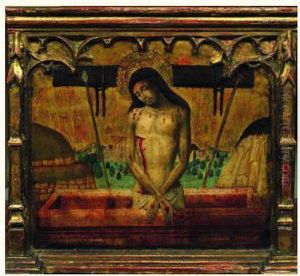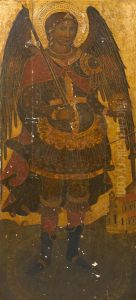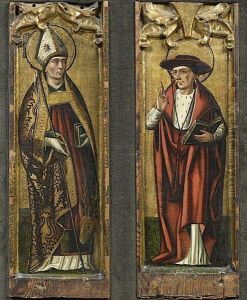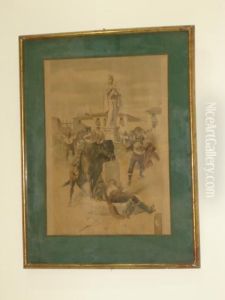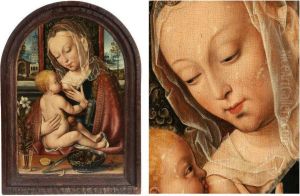Master Of Perea Paintings
The Master of Perea, also known as the Maestro de Perea, is an anonymous Spanish painter who was active during the late 15th and early 16th centuries, a period that marked the transition from the Gothic to the Renaissance style in Spanish art. The title 'Master of Perea' is a convenience used by art historians to refer to an artist whose actual name has not been recorded, but whose work exhibits consistent stylistic characteristics. This practice is common when discussing medieval and early Renaissance artists whose individual identities have been lost over time.
The designation 'Master of Perea' is derived from an altarpiece created for the church of Perea, which is considered one of the principal works attributed to this artist. The attribution of works to the Master of Perea is based on stylistic analysis and the comparison of artistic elements found in the Perea altarpiece with those in other paintings. His oeuvre is characterized by a blend of Gothic sensibilities and the emerging Renaissance approach to form, space, and perspective.
The body of work attributed to the Master of Perea includes religious panels and altarpieces that exhibit a refined use of color and a detailed approach to the depiction of figures and narratives. The influence of Flemish painting, particularly in the use of oil paint and attention to detail, is evident in his work. This suggests that the Master of Perea may have been familiar with or even trained by Northern European artists who were active in Spain during that time, or he may have had access to works from the Low Countries.
Unfortunately, little else is known about the life of the Master of Perea, including his training, the scope of his workshop, or his influence on other artists of the time. The lack of signed or documented works makes it difficult to reconstruct his biography with any certainty. As with many artists of the period, it is through the enduring visual legacy of their artwork that we gain insight into their artistic contributions. The works attributed to the Master of Perea continue to be studied and appreciated for their role in the development of Spanish art during a pivotal historical moment.
